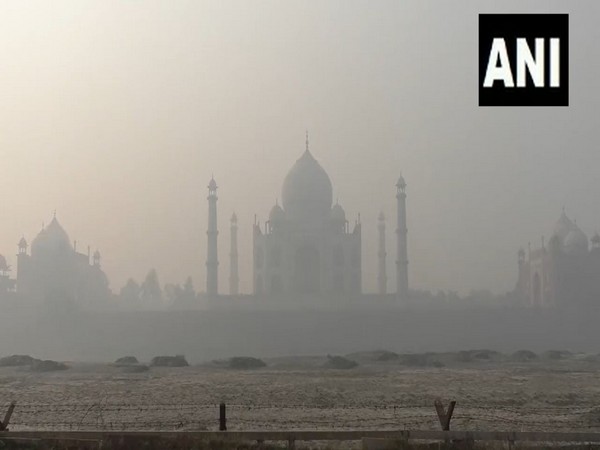Uttar Pradesh: Taj Mahal in Agra disappears under blanket of smog with surge in air pollution levels

Agra (Uttar Pradesh) [India], November 6: With a surge in air pollution levels this time of the year, the Taj Mahal, one of the seven wonders and the pinnacle of Mughal architecture disappeared under a blanket of smog on Monday morning. The structure was engulfed in a layer of haze and was barely visible to the unaided eyes.
However, this was not the first time, the mausoleum of white marble was hidden amid the pollutants. The city's air quality level has reeled under the poor category since November 4 and was recorded at an overall air quality index of 256 this afternoon.
As per AQI.IN, the air quality in Agra was recorded as 163, in Aligarh it was at 172, 154 in Bareilly and 170 in Bulandshahr, all in the 'poor category zone'. The air dropped to the 'severe category' in Ghaziabad and Hapur with an AQI of 352 while it remained in the 'unhealthy category' in Meerut and Muzzafarnagar with an aqi of 289 and 213.
Built-in Agra between 1631 and 1648 by order of the Mughal emperor Shah Jahan in memory of his favourite wife, the Taj Mahal is a jewel of Muslim art in India and one of the universally admired masterpieces of the world's heritage.
Air pollution levels can be high during the winter months for a number of reasons, including dust and vehicular pollution, dry-cold weather, stubble burning, burning crop residues after the harvest season and commuting.
Cold air is denser and moves slower than warm air, so it traps pollution and doesn't whisk it away. This means that air pollution in winter remains in place for much longer than during the summer.
Taj Mahal's marble is discoloured by airborne particulate matter, which is made up of black carbon, light-absorbing brown carbon, and dust.
The current concentration of PM2.5 in Uttar Pradesh is 130 (ug/m3). The World Health Organisation (WHO) recommends 15 ug/m3 as the threshold concentration of PM2.5 for 24 hours. Currently, the concentration is 5.20 times the recommended limit.
Meanwhile, the overall air quality in the National Capital continued to be in the 'severe' category for the fifth straight day, as per the Central Pollution Control Board.
According to the data issued by the System of Air Quality Forecasting and Research (SAFAR-India), the air quality in the National Capital was recorded at 488, up from 410 a day ago.
Delhi Environment Minister Gopal Rai has introduced the odd-even scheme for vehicles plying in the city. Vehicles with registration numbers ending in odd or even numbers will ply on alternate days.
According to doctors, for any healthy person, a recommended AQI should be less than 50, but these days the AQI has spiked beyond 400, which could prove fatal for those suffering from lung-related diseases and even poses a risk of lung cancer. (ANI)